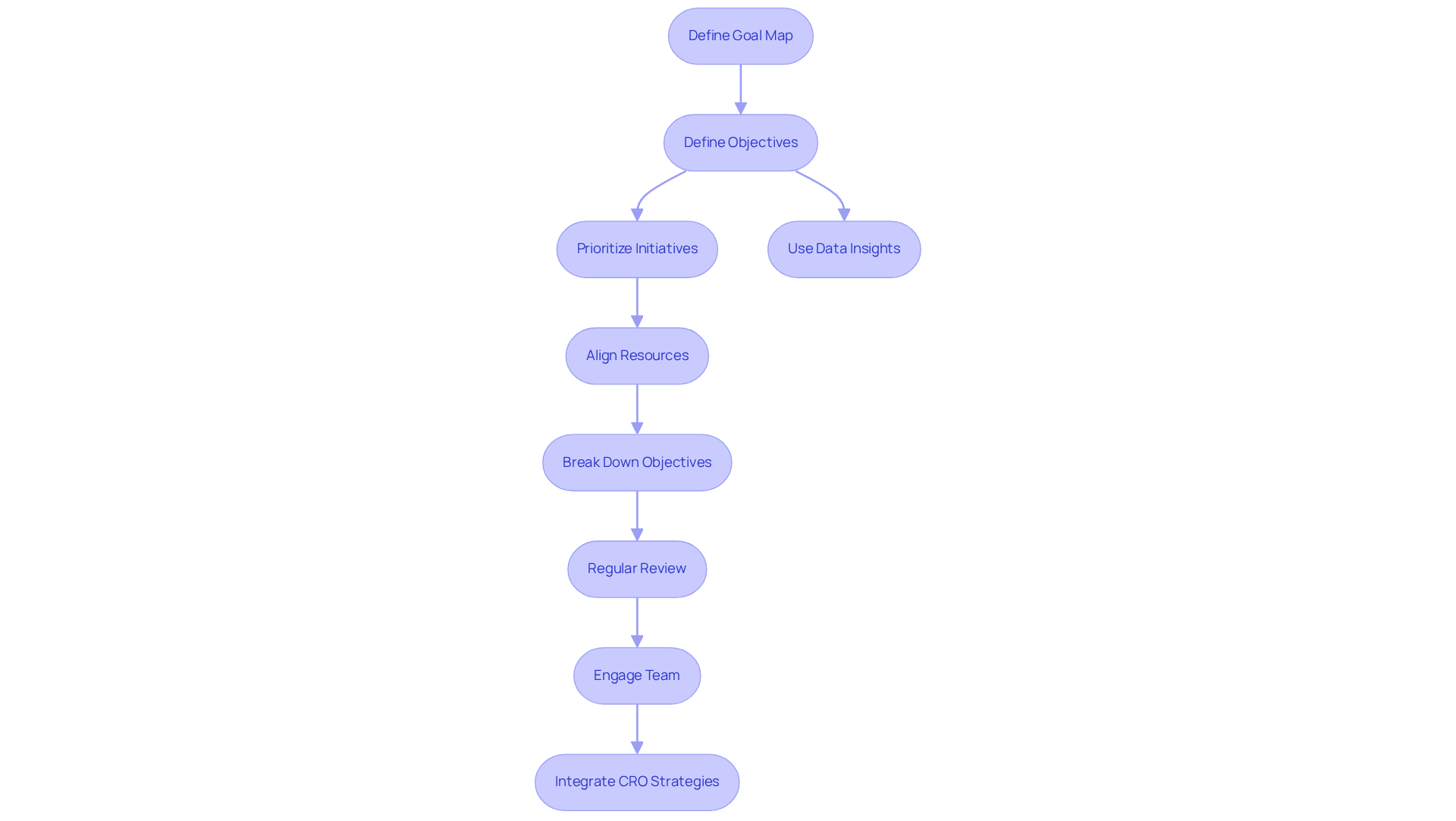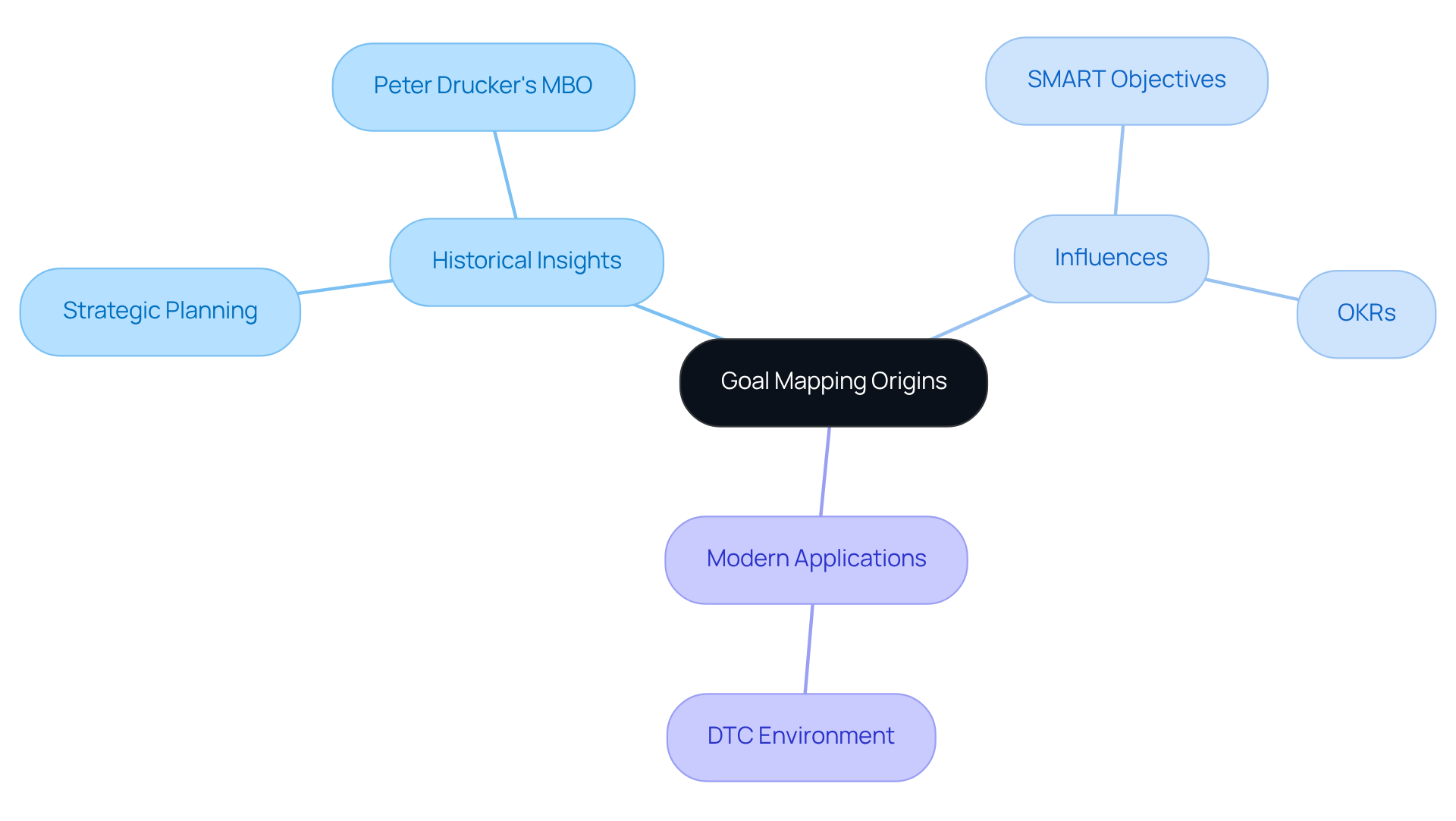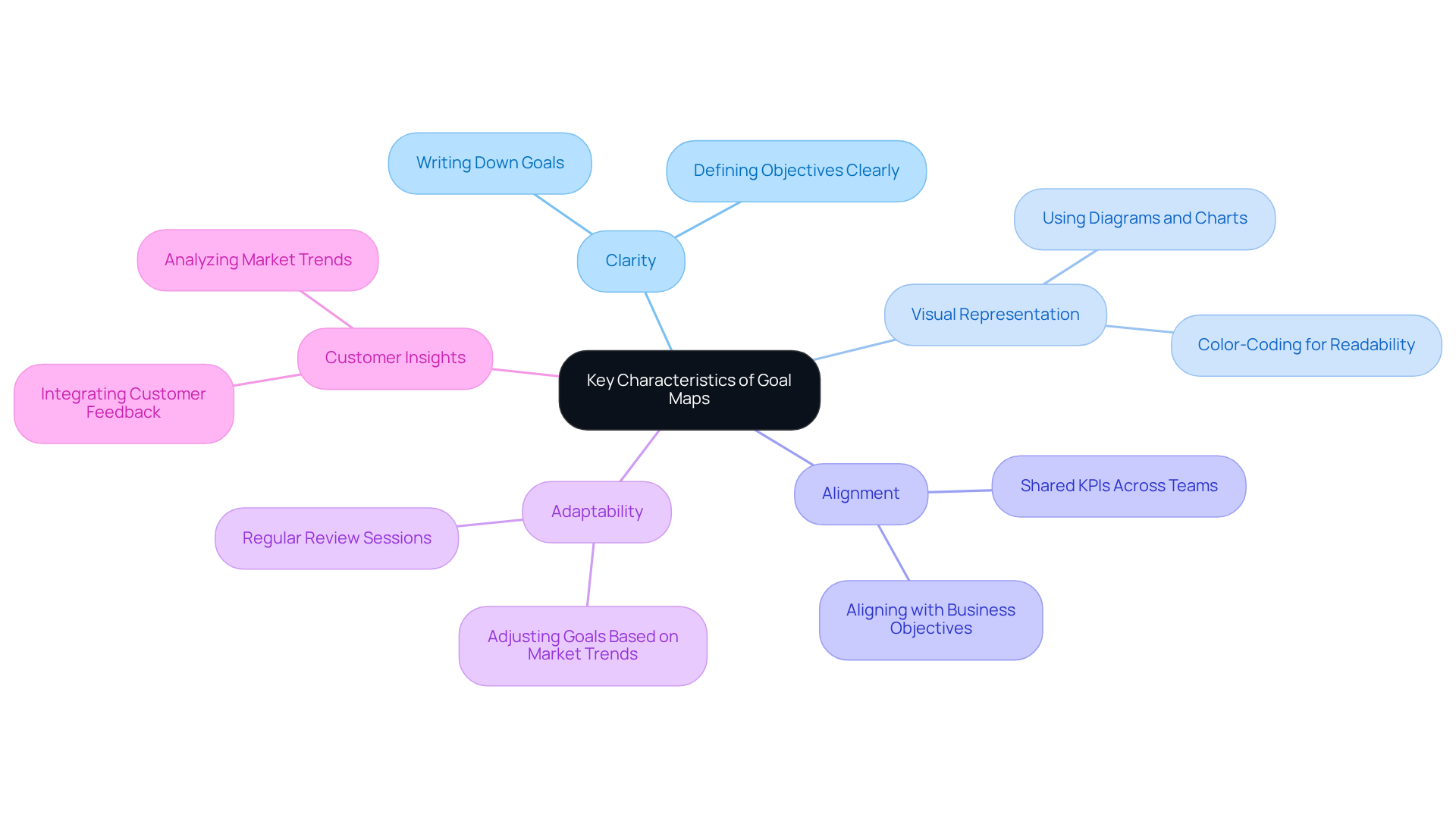
Overview
Goal maps are indispensable for the success of direct-to-consumer (DTC) brands. They offer a structured visual representation of objectives, which enables companies to prioritize initiatives and align resources effectively. By dissecting larger goals into manageable tasks and conducting regular progress reviews, DTC brands can significantly enhance operational efficiency, adapt to market fluctuations, and ultimately drive growth and profitability.
Introduction
In the competitive realm of direct-to-consumer (DTC) brands, clarity and strategic alignment are paramount for success. A goal map emerges as a vital tool, offering a visual representation that breaks down complex objectives into actionable steps, ensuring that every team member is on the same page. However, the challenge lies in effectively leveraging this tool to navigate rapidly changing market dynamics and soaring customer acquisition costs.
How can DTC brands harness the power of goal mapping to not only streamline their operations but also enhance profitability and foster a culture of accountability?
Define Goal Map: A Strategic Tool for DTC Brands
A goal map serves as a visual representation that delineates a company's objectives and the necessary steps to achieve those goals. This strategic tool serves as a goal map that empowers DTC companies to define their goals, prioritize initiatives, and align resources effectively.
By breaking down larger objectives into manageable tasks, a goal map establishes a clearer path to success, ensuring that all team members understand their roles in realizing the organization's vision. This structured approach is especially advantageous for DTC brands operating in fast-paced environments where clarity and focus are essential.
Regularly reviewing and adjusting your objectives based on current data and market trends is crucial for maintaining effective strategies aligned with your business aims. Furthermore, integrating accountability through consistent check-ins enhances achievement, as it fosters momentum and awareness of progress.
Engaging the team in the goal map process is essential for ensuring alignment and accountability, ultimately driving growth and success. Moreover, incorporating comprehensive Conversion Rate Optimization (CRO) strategies into your objective mapping can significantly boost profitability, given that CRO represents the highest ROI marketing lever available.
By leveraging data-informed insights and rigorous testing, DTC companies can synchronize their paid advertisements and landing pages, ensuring that each initiative contributes to sustainable growth and improved conversion rates.

Contextualize Goal Maps: Relevance for Direct-to-Consumer Brands
In the fiercely competitive landscape of direct-to-consumer (DTC) companies, objective charts serve as essential instruments for navigating market challenges. With customer acquisition costs surging by 25% to 40%, it is imperative for DTC companies to swiftly adapt to evolving consumer preferences.
By leveraging a goal map, these companies can establish clear, actionable targets that align seamlessly with their overarching business strategies. This strategic alignment not only enhances operational efficiency but also fosters a culture of accountability among team members.
For example, when a DTC company launches a new product, a goal map can delineate marketing approaches, sales objectives, and customer engagement plans, ensuring that all efforts are synchronized and directed toward achieving specific results.
Marketing experts emphasize that effective target setting is vital for DTC companies, as it empowers them to remain flexible and responsive in a rapidly changing market. By harnessing objective maps, brands can significantly improve their operational efficiency, ultimately resulting in reduced customer acquisition costs and enhanced profitability.

Trace the Origins of Goal Mapping: Historical Insights
Goal mapping originated from strategic planning methodologies that became prominent in the late 20th century, significantly influenced by Peter Drucker's Management by Objectives (MBO) approach. This approach emphasized the alignment of personal aims with organizational objectives using a goal map, fostering accountability and clarity.
As the practice evolved, visual components were integrated into the goal map to enhance engagement and comprehension. Frameworks such as SMART objectives and OKRs (Objectives and Key Results) emerged, further refining the methodology by highlighting the importance of specificity, measurability, and relevance in target setting.
In today's fast-paced DTC environment, effective objective mapping through a goal map is recognized as an essential resource, enabling companies to remain agile and responsive to market demands while promoting sustainable growth.

Identify Key Characteristics of Goal Maps: Essential Components
Effective objective frameworks for direct-to-consumer businesses are characterized by clarity, visual representation, and alignment with overarching business aims. A well-organized goal map distinctly outlines main aims, breaking them down into actionable steps and visually depicting the interconnections among various targets.
Adaptability is crucial; the map must accommodate modifications in response to shifting market conditions. For DTC companies, integrating customer insights and market trends into objective maps enhances their relevance and efficiency.
By ensuring that all team members are aligned with the objectives outlined in the goal map, brands can foster collaboration and drive collective efforts toward achieving their strategic goals.

Conclusion
A goal map serves as an essential strategic tool that empowers direct-to-consumer (DTC) brands to clarify their objectives and streamline their efforts toward achieving success. By visually representing goals and the steps required to reach them, goal maps foster alignment among team members, ensuring that everyone is unified and focused on common targets. This structured approach is particularly crucial in the dynamic DTC landscape, where agility and responsiveness are vital for overcoming market challenges.
The importance of goal maps is underscored through various aspects, including their role in enhancing operational efficiency, reducing customer acquisition costs, and promoting accountability within teams. Engaging in the goal mapping process enables DTC companies to set clear, actionable targets that resonate with their overarching business strategies. Moreover, integrating data-informed insights and Conversion Rate Optimization (CRO) strategies into the goal map can significantly enhance profitability and growth.
Ultimately, the significance of adopting goal maps cannot be overstated. They not only provide a roadmap for success but also cultivate a culture of collaboration and continuous improvement within DTC brands. Embracing this strategic tool is essential for navigating the complexities of the market and achieving sustainable growth, making it imperative for companies to invest time and resources into effective goal mapping practices.
Frequently Asked Questions
What is a goal map?
A goal map is a visual representation that outlines a company's objectives and the necessary steps to achieve those goals, helping DTC brands define, prioritize, and align their initiatives effectively.
How does a goal map benefit DTC brands?
It breaks down larger objectives into manageable tasks, clarifies roles for team members, and provides a structured approach that is particularly useful in fast-paced environments.
Why is it important to regularly review and adjust objectives in a goal map?
Regular reviews and adjustments based on current data and market trends are crucial for maintaining effective strategies that align with business aims and ensure ongoing relevance.
How can accountability be integrated into the goal map process?
Accountability can be enhanced through consistent check-ins, which foster momentum and awareness of progress towards achieving the set objectives.
Why should teams be engaged in the goal map process?
Engaging the team in the goal map process ensures alignment and accountability, which ultimately drives growth and success for the organization.
What role does Conversion Rate Optimization (CRO) play in goal mapping?
Incorporating comprehensive CRO strategies into objective mapping can significantly boost profitability, as CRO is considered the highest ROI marketing lever available.
How can DTC companies leverage data-informed insights in their goal mapping?
By using data-informed insights and rigorous testing, DTC companies can synchronize their paid advertisements and landing pages, ensuring that each initiative contributes to sustainable growth and improved conversion rates.
FAQs











